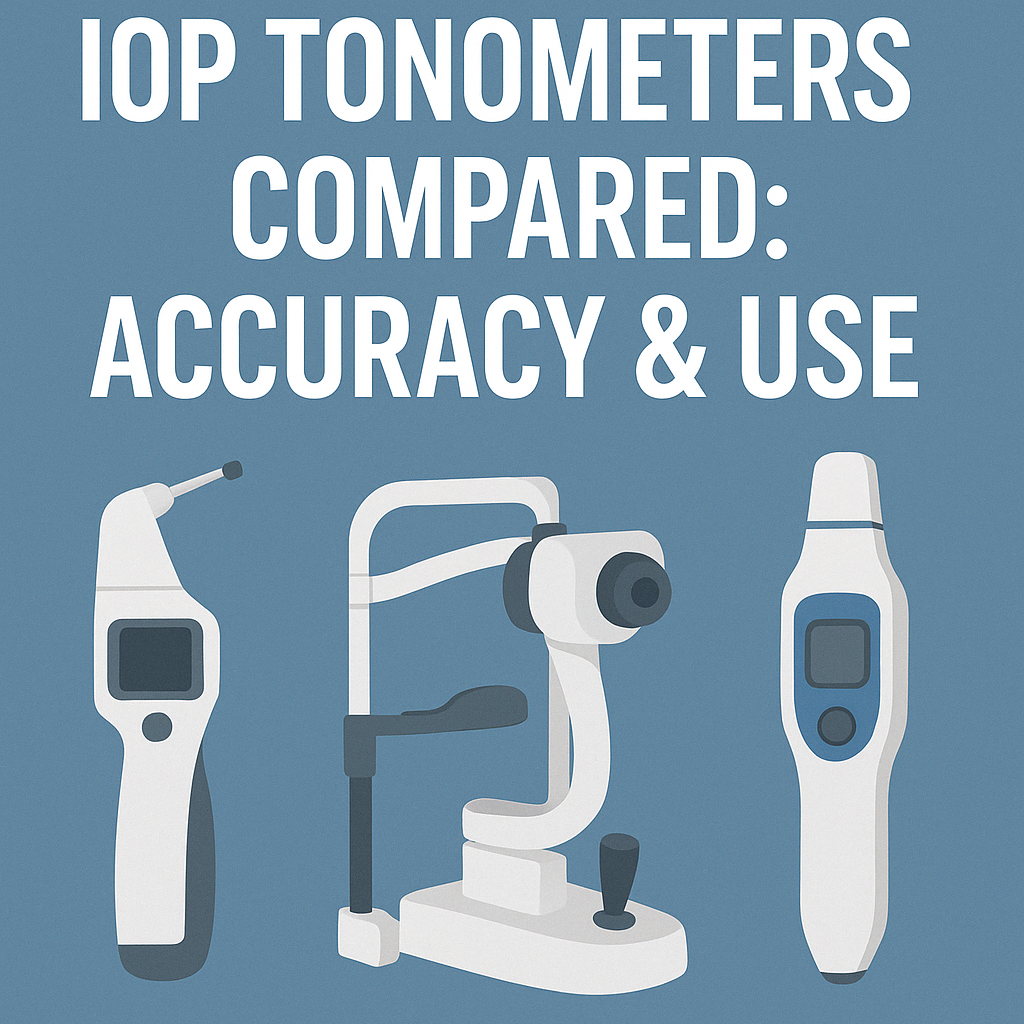Tistoryview
Disease&Treatment/Glaucoma
👁 Intraocular Pressure (IOP) & Glaucoma: Why It Matters, Tonometers for IOP Measurement
eye_doc 2025. 4. 20. 02:29👁 Intraocular Pressure (IOP) & Glaucoma: Why It Matters
- Glaucoma causes irreversible optic nerve damage
- IOP measurement is the key tool for early detection and management
- Plays a role in diagnosis, monitoring, and screening
🧪 Key Tonometers for IOP Measurement
1. Goldmann Applanation Tonometer (GAT)
ProsCons
| Gold standard, high accuracy | Requires slit lamp, fluorescein, anesthesia |
| Operator-dependent | Risk of infection (contact method) |
✅ Adjusts dial to align two semicircles → determines IOP


2. Non-Contact Tonometer (NCT)
FeatureNotes
| Uses air puff to flatten cornea | Non-contact → No anesthesia |
| IOP = Time to corneal flattening | |
| Very fast & convenient → great for screening |
⚠ Limitations:
- Affected by ocular pulse (~4 mmHg variation)
- Less accurate with high IOP
- Lower agreement vs. GAT
📊 Accuracy Comparison (vs. GAT, via ICC)
DeviceAgreement with GAT (ICC)
| Icare Rebound Tonometer | 0.811 (highest) |
| Tonopen | 0.749 |
| Non-Contact Tonometer | 0.679 |
✅ Summary
- IOP monitoring is essential in glaucoma care
- GAT = gold standard
- NCT = fast, user-friendly, but limited accuracy
- Icare / Tonopen = balance of accuracy and ease
- Use NCT as a screening tool, but confirm high IOP with GAT
